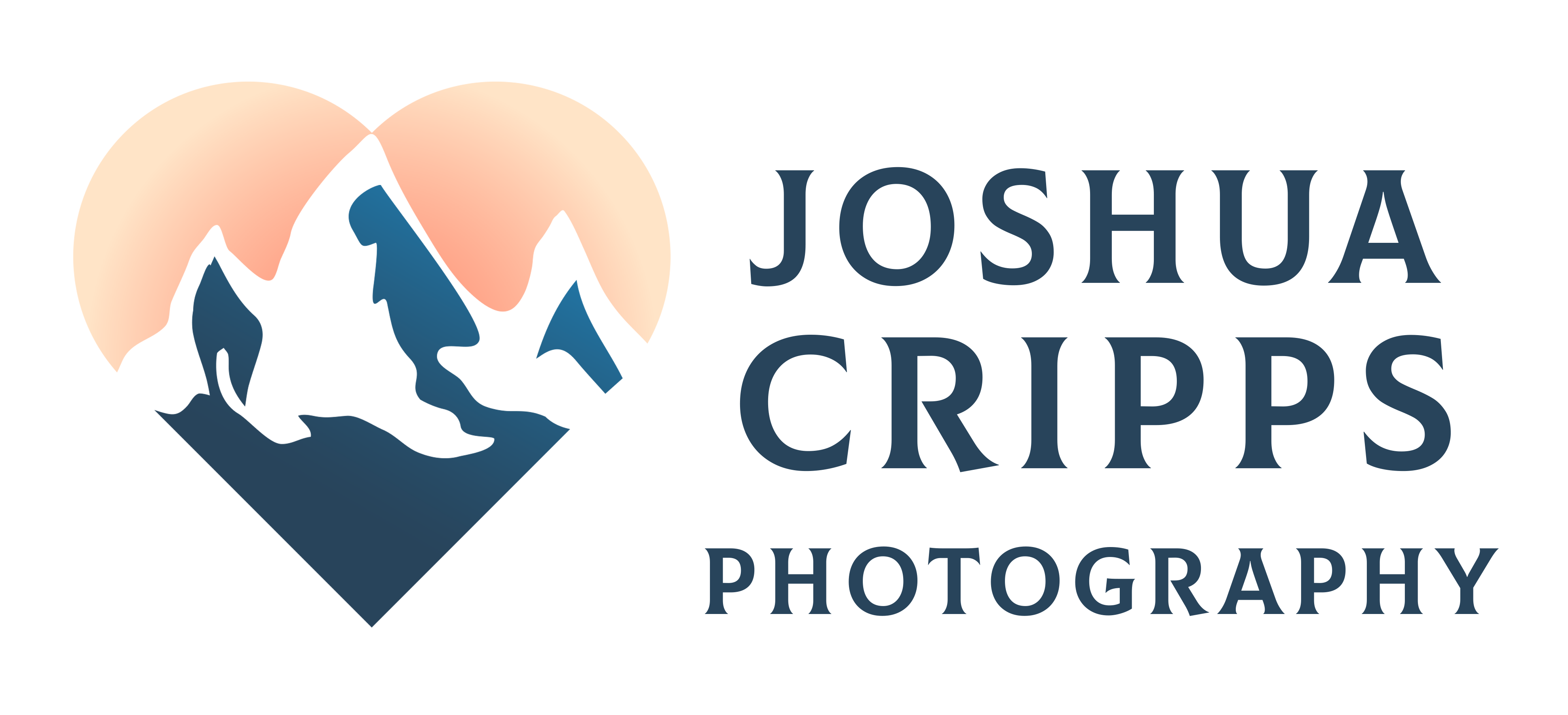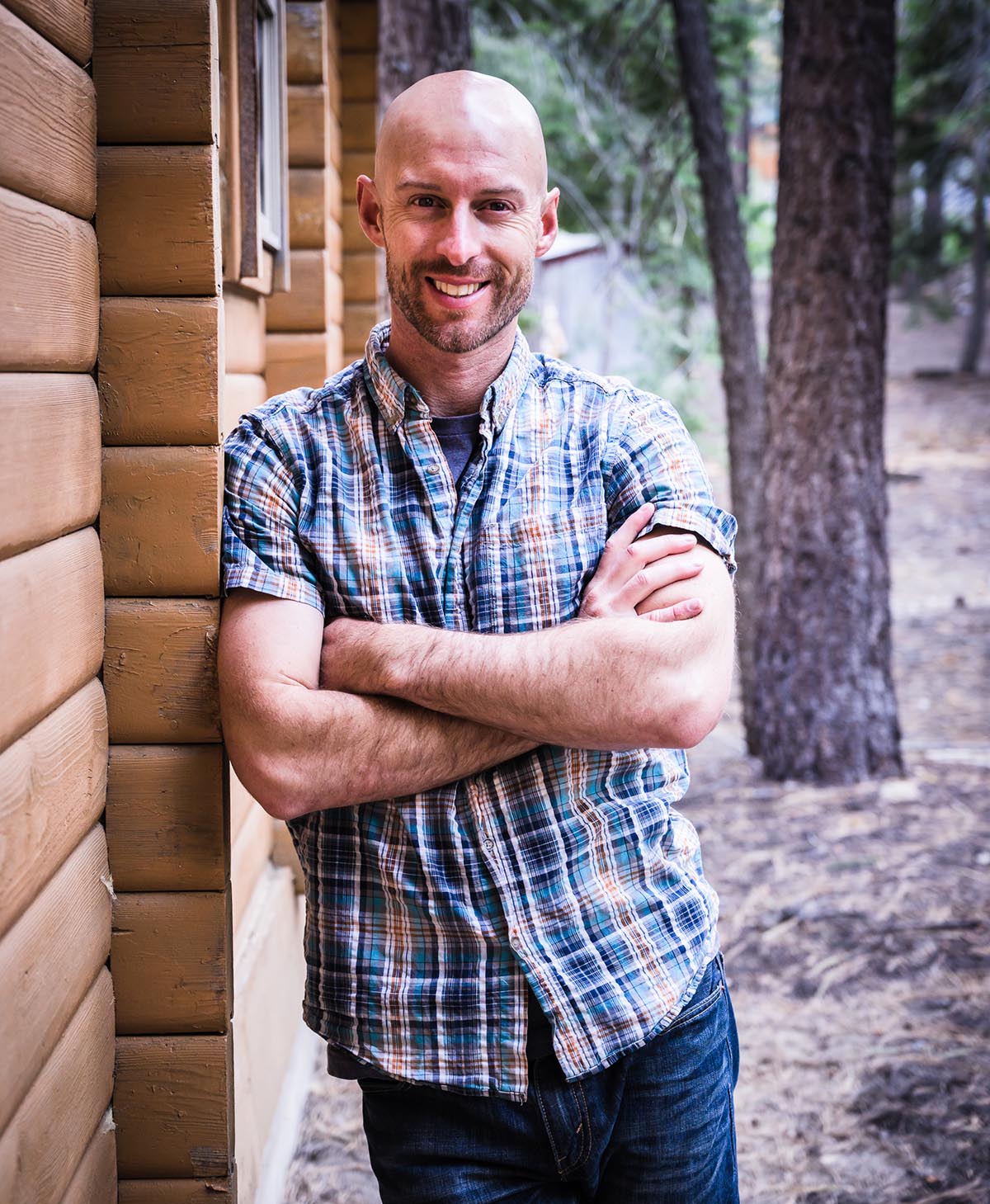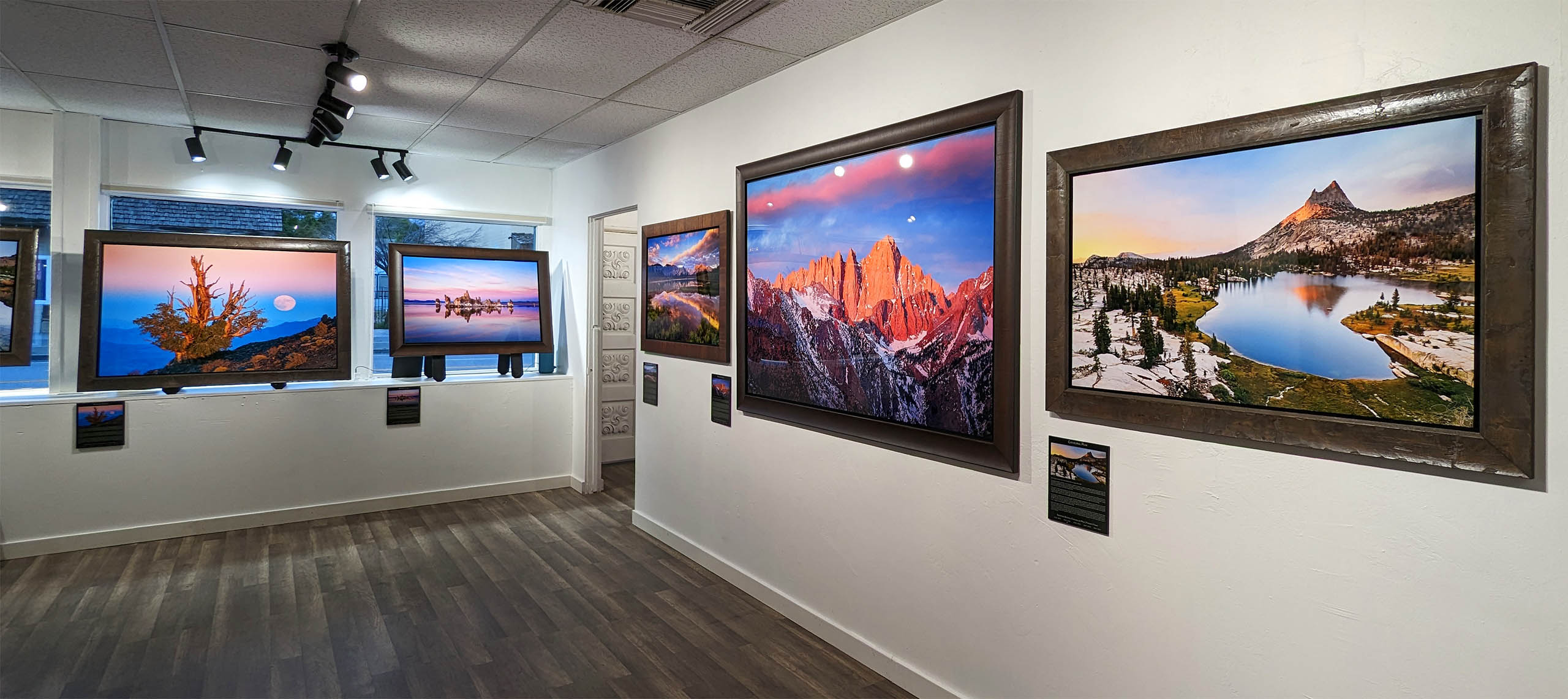Joshua Cripps
EVERYTHING I Carry on a 20-Mile Photography Day Hike
- No Comments
Hey there, Joe pal here, JC. And today I’m coming at you from about 10 miles into the back country of Kings Canyon national park. I’m on a little day hike out here today for a couple of reasons. One, it’s just one of my favorite places in the whole world. I think it’s one of the most monumentally, beautiful national parks that I’ve ever been to. And I want to see if I could shoot some photos. I mean, this is a photography channel after all, isn’t it? I wanted to challenge myself on a nice long day hike of about 20 or 22 miles with maybe 5,000 feet of climbing and 5,000 feet of descending. And the reason that I want to start bumping my fitness up is because it’s summer, which means it’s backpacking season. And if you guys have been following me for any amount of time, you know, that backpacking is basically my favorite thing to do in the entire world. That, alongside with photography.
And the nice thing is those two things go together hand in hand. In fact, I can’t think of any better place than the wilderness to experience those truly special, unique and personal moments that we’re all trying to find all the time as landscape photographers. So my recommendation for any landscape photographer is get into the wilderness, whether on a long day hike or on a backpacking trip. And I realized that if you’ve never done this before, that it can seem kind of intimidating to try to carry all of your camera equipment, all of your food, all of your clothing, all of your shelter, everything that you need to stay safe and warm and comfortable and happy in the back country on your back in a pack like this. So in this video, I thought I’d share with you guys out there, everything that I bring with me in order to have a great experience on a nice long day hike like this one, just a tad windy out here today, just a tad. And let’s go ahead and roll the intro.
You can break down all this stuff I carry into four basic categories. (1) You’ve got your trekking equipment, (2) you’ve got your camera equipment, (3) you’ve got your clothing and (4) you got your food. So let’s dive into each of those categories
Trekking Equipment
All right. So this guy right here, my pack is the foundation of all my back country experiences. And this, I bring this same pack. It’s by hyperlight mountain gear. And I do this, whether I’m day hiking or overnighting, it’s just an amazing pack. It’s super light, incredibly comfortable. And it has this roll top, which means that I can use this on maybe a seven or eight day trip, or I can just roll it down and smack myself in the face with it like that and use it on a day. Hike like today. It’s just an incredible pack.
If you’re looking for a place to start highly recommended and it’s made out of this fabric called Dyneema, which is super bomb-proof and essentially waterproof. So you don’t need any kind of cover really rugged. And overall, this is by far the best pack that I have ever owned. When I Trek, I also use hiking poles. These are not just for the old Martin up there. You guys, they’re also for the young fart, send the fit fart, send the outer shape parts. It’s pretty much for every fart who likes to hike. Those things are amazing. They’re going to help save your legs, increase your endurance, involve your upper body. It’s just a win, win, win. Did he win to use those? And the other stuff that I got with me here in the back country today for my day hike, pretty simple stuff. I’ve got a paper map. I just don’t trust electronics back here. So even if you have GPS on your phone, if the batteries die or the phone dies, the GPS doesn’t work, you’re sunk. So I always bring a paper map and a compass. This is my back country. First aid kit, just ibuprofen. Then I have very important sunscreen bug repellent, pocket knife. If I need to, um, you know, what are those animals called and star Wars?
And I’ve got a pocket knife here in case I ever need to, you know, cut open a tree and crawl inside to save myself during a blizzard on the ice planet hot. And then of course I always carry with me some TP and a plastic bag just in case duty calls. And the plastic bag is so that you can carry your TP back out with you guys. Don’t bury your TP. Just bring it back out with you. It’s really not that gross. And then some hand Sani as well. In terms of safety. I also highly recommend that you bring some kind of a personal locator beacon, like a spot or a Garmin inReach, especially if you’re hiking solo. I typically always have one of these with me, but today I spaced out and I just forgot to throw it in the bag, but that’s okay because I actually have 12 bars of five G signal here in the back country.
Hey. Yeah. Could I, uh, can I get a pizza delivered if the extra cheese and extra sauce and extra crust, you know what, just make it two pizzas. Oh, the address. Um, I dunno, I think you’re going to have to send it by mule or something hung up. No, I’m just kidding. Don’t rely on your cell phone. You’re not going to have service. Your bone battery could die. All kinds of things could happen with your electronics. So one of those ruggedized PLPs could be a literal lifesaver for you. And here are a couple of little pro tips about extra things to bring chapstick. Don’t forget the chapstick, the air out here can be really, really dry. Your lips are going to thank you for that. Make sure it’s got SPF in it. And here’s my super special secret, extra bonus. Cough drops, especially menthol cough drops.
These things are incredible when you’re climbing up some steep trail and you’re just sucking down dust and your mouth is parched. And you feel like you’ve got a porcupine trying to claw its way out of your throat. Chuck a cough drop in your mouth and it will open up your airways, open up your lungs, help you feel you can breathe again. And it just makes life a whole lot better. So get some of those too. Funnily enough, water is one of those things that it’s really easy to overdo on a big hike. A lot of people think like, Oh, I’m hiking 20 miles today. I’ve got to carry four liters of water. You know, how much four liters of water weigh and weighs about 8.8 pounds, four times 2.2. Yeah. It’s almost nine pounds of water. Just weighing you down. That’s absurd. I typically, especially here in the Sierra where streams are everywhere, I never actually bring more than about a liter and a half.
And if I can just bring three quarters of a leader, I try to get away with that because there’s so many places to fill up. Now, typically you want to bring some kind of water purification or water a filter. Me personally, I only do that about half the time. It depends on where I’m going. And if I’m going to be in an area with lots of people camping, or if I’m going to be in a true wilderness area where I’m literally just drinking, snowbelt from the streams. I typically don’t bring a water filter, but if you decide not to bring a water filter, don’t blame me. If you get sick, it is on you to make your own responsible decisions. I’m just telling you what I do in my experiences, but for you, if you’re just starting out, I highly recommend bringing a water filter until you feel more comfortable about assessing the quality and cleanliness of the water that you’re drinking.
Clothing
Now let’s talk about clothing because that is one of the most important items that can make or break your back country. Experience. Everything I wear is some kind of synthetic fabric. I never bring cotton into the back country because when it gets wet, it doesn’t insulate. And it chafes like crazy. So everything from the briefs that I wear to my outer garments are all synthetic breathable, wicking fabrics. So I generally like to hike in one of these, it’s called a sun hoodie. Most people wear them for fly fishing, but they’re awesome for hiking because they have fantastic set production. They’ve got a full hood. They dry really fast. They’re lightweight and they’re wicking. So even in hot weather, they’re very comfortable to wear down here in my bottoms. I’m also wearing all synthetic everything. I’ve got a pair of lightweight running shorts under those. I’ve got some tights because it’s actually pretty cold today.
And then I have some wool socks here and because it was so cold this morning and so windy, I opted for the knee high wool socks. And I highly recommend you guys Merino wool or synthetic socks, never, ever cotton socks in the back country. These little fancy things are called dirty girl Gators, and they just help prevent this kind of stuff. The rocks and detritus from getting in your shoes. The shoes that I’m wearing are called ultras. They’re ultra lone peaks. And these are a great shoe. If you have a really wide foot, like I do very comfortable, lots of cushion and very lightweight. They’re not waterproof though. So your feet will get wet. If you go through any river crossings and nose. Now, like I said, it was actually really, really cold and windy today. A lot of the lakes above 11,000 feet still had ice on them.
So I also have a fleece hoodie with me. I’ve also got a Merino wool beanie windproof waterproof shell to go over the top of everything. And even though it’s really lovely and more of a blue skies right now today, it was hot and freezing cold earlier. The sunny skies, Julia, there is a soul stealing Arctic Gale blowing, and I had every single layer on including this, which is a net Gator or a buff, which you can pop on and you can use it as sun protection, wind protection, just a little bit of extra insulation, whatever you want. And I’ve also got some lightweight gloves as well. So that’s everything that I’ve got with me in terms of the clothing. And this is a really good setup. It’s going to keep me comfortable from hot temperatures, say 80 degrees or above all the way down to below freezing temperatures. I can just add or remove these layers as I need to.
Food
Let’s talk about the food that I bring for a hike like this. I actually don’t bring a ton of food, even though I’m doing a fair amount of mileage today and probably burning a lot of calories. Our bodies have reserves of calories built in that they can use for hiking all these long days. So what I like to bring is basically some snacks and one big meal. So I’ve got some bars, I’ve got a banana, well, an extra banana anyway, a couple mandarins. And this is, uh, my lunch, a big fat burrito. I probably won’t eat the whole thing at once. I’ll have half now and half a little bit later. And I’m a big fan of having sugary sweets in the back country, especially Toklas. These are Werther’s. These are great too, any kind of sweets, they really just give you that quick sugar boost and you don’t have to feel guilty about eating them cause you’re burning thousands of pounds.
Camera Equipment
And finally, let’s talk about, about photography because I have a full kit with me. I have everything that I need to be satisfied and happy taking pictures and pretty much any kinds of conditions. Now I’m recording this blog with my Nikon Z seven. That’s what I’m also using for any kind of stills. So when I’m hiking, I only bring one body, which means I don’t have the capability to shoot stills and video simultaneously. I have to switch back and forth, but that’s a trade off that I’m willing to make. And on today’s trip, I brought two lenses, the 24 70 that I’m filming with as well as an ultra wide of 14 to 30. And then typically on a backpacking trip, I’d also bring a 70 to 200, but I just didn’t feel like lugging the extra weight today. I also bring some cleaning stuff like a rocket blower and microfiber wipes.
And then this little baggy just has extra stuff in it, like memory cards and batteries. And I also bring an entire full filter kit. I got a six stop filter on the lens right now that really helps for filming to keep a nice shallow depth of field and a good shutter speed that produces good quality video. And I’m also got a polarizer as well as a 10 stop filter because we’ve had such nice clouds and wind today. I really wanted to bring the whole filter kit. And of course I also have a tripod as well. This is an Enduro legs with a Colorado tripod company, mini ball head. Those things are freaking sweet. You guys, they’re tiny, they’re incredibly strong and they cost like $20. So I highly recommend everybody pick up one of those. And when I’m hiking, the way that I carry my camera is with this peak design capture pro.
And I’ve got my tripod, as you can see back here and I use this extra little strap to just kind of hold that shoulder up off of my shoulder because the camera wants to yank it down like that. So that helps keep it off my trapezius muscle. It makes it a lot easier to keep hiking long distances through day. And that’s it. That’s absolutely everything that I’ve got in my pack with me today. I’d say in total, it probably weighs somewhere between 12 and 15 pounds. So it’s not a ton of weight to carry over a long distance. It’s actually okay. Now, before I wrap up the video, I’m sure people are wondering, did I actually manage to take any photos on this 20 mile day hike? And I got a few that I like well enough to at least show here in the video. So let me close out with those.
That’s going to do it for me for now as a summer goes on, I’m going to be putting together some more blogs about my backpacking adventures places I go, the photos I take as well as some of the extra gear that I need to carry for those overnight trips. So I hope that you guys found this interesting, helpful, and maybe a starting point. If you’re thinking about getting into the back country, just drop your questions down in the comments below. And I will try to answer as many as I possibly can. That’s going to put a pin in this video. So until next time everybody have fun and happy shooting.
Be sure to subscribe to my newsletter and YouTube channel for even more landscape photography how-to.



